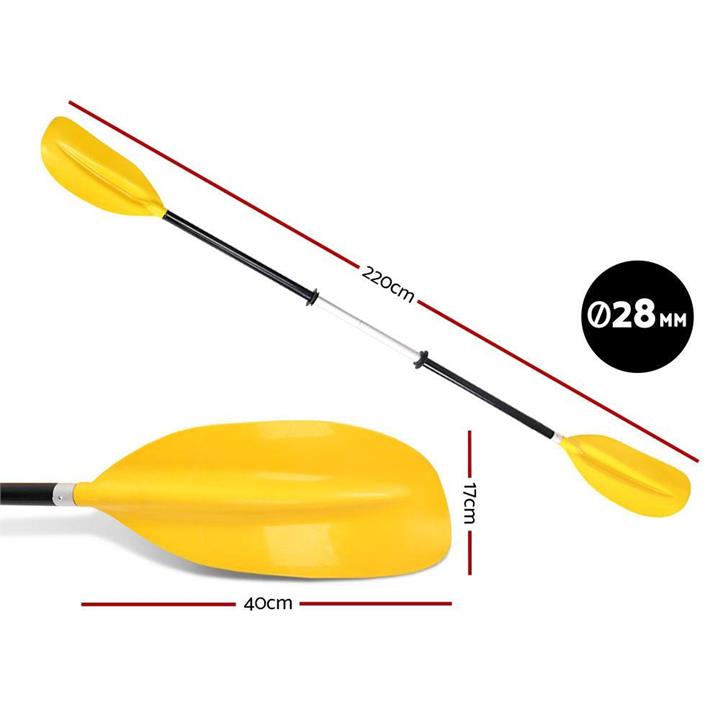Stand-up paddleboarding (SUP) is a thrilling way to explore the water and get a full-body workout. One of the fundamental components of this water sport is the paddle, a key tool that propels you through the water. Understanding how a paddleboard paddle works and what to consider when buying one is crucial to enhancing your paddling experience. Let’s delve into the mechanics and important factors to keep in mind.
The Anatomy of a Paddleboard Paddle:
Before we discuss what to look for when purchasing a paddle, let’s break down the basic components of a paddleboard paddle:
1. Blade: This is the part of the paddle that goes in the water. Blades can vary in shape, size, and material, and their design affects the paddle’s performance.
2. Shaft: The shaft is the long, cylindrical portion of the paddle. It’s typically made of materials like aluminum, fiberglass, or carbon fiber and comes in various shapes, including round, oval, or teardrop.
3. Handle or Grip: The handle or grip is the part you hold onto while paddling. It should be comfortable and provide a secure grip.
How a Paddleboard Paddle Works:
Paddleboard paddles work on a straightforward principle: You dip the blade into the water and pull it towards you to propel the board forward. The angle, position, and depth of the blade in the water, as well as the force and technique applied, determine the board’s direction and speed. Here’s a basic guide to using a paddleboard paddle effectively:
- Entry: When starting each stroke, ensure the blade enters the water perpendicular to the board’s centerline. This minimizes resistance and helps you maintain a straight course.
- Catch: As the blade enters the water, fully submerge it to get the most power. The blade should be vertical or slightly tilted forward.
- Pull: Once the blade is in the water, pull it towards you in a straight line. Your core and upper body strength play a significant role in this phase.
- Exit: After completing the stroke, remove the blade from the water and repeat the process on the opposite side for a smooth paddling rhythm.
What to Look for When Buying a Paddleboard Paddle:
Choosing the right paddle for your needs can significantly impact your paddling experience. Here are key factors to consider when buying a paddleboard paddle:
1. Paddle Length:
- The paddle’s length should be appropriate for your height and type of paddling. A general guideline is to choose a paddle that’s 8-10 inches taller than your height. Adjustable paddles are versatile and allow you to fine-tune the length.
2. Paddle Material:
- Paddle shafts can be made of aluminum, fiberglass, or carbon fiber. Carbon fiber paddles are lightweight and offer excellent performance, but they tend to be more expensive. Fiberglass paddles strike a balance between weight and cost, while aluminum paddles are durable and budget-friendly.
3. Blade Shape and Size:
- Blade shape affects the paddle’s performance. For general paddleboarding, consider a medium-sized blade with a teardrop or rectangular shape. Smaller blades are better for longer distances, and larger blades provide more power but can be tiring over extended periods.
4. Paddle Weight:
- Lighter paddles are easier to handle and reduce fatigue, but they can be more expensive. Heavier paddles may be more durable but can strain your arms during long paddles.
5. Shaft Shape:
- The shape of the shaft can impact your comfort and grip. Choose a shape that feels comfortable in your hands, whether it’s round, oval, or ergonomic.
6. Adjustability:
- Adjustable paddles allow you to share your paddle with others or adapt its length to different water conditions, making them a versatile choice.
7. Handle or Grip Design:
- Look for a comfortable grip that fits your hand well. Ergonomic and contoured grips can reduce fatigue during long paddling sessions.
8. Price:
- Paddleboard paddles come in a range of prices. Consider your budget and balance it with the quality and features you need for your paddling goals.
9. Paddleboarding Style:
- Your paddle choice may also depend on your paddleboarding style. If you’re into racing, you may prefer a lightweight, high-performance paddle, while casual paddlers might prioritize comfort and affordability.
In conclusion, understanding how a paddleboard paddle works and what to look for when purchasing one can greatly enhance your paddleboarding experience. By selecting the right length, material, blade shape, and other factors that suit your needs and preferences, you can maximize your enjoyment on the water while getting the most out of your paddleboard adventures. Happy paddling!
